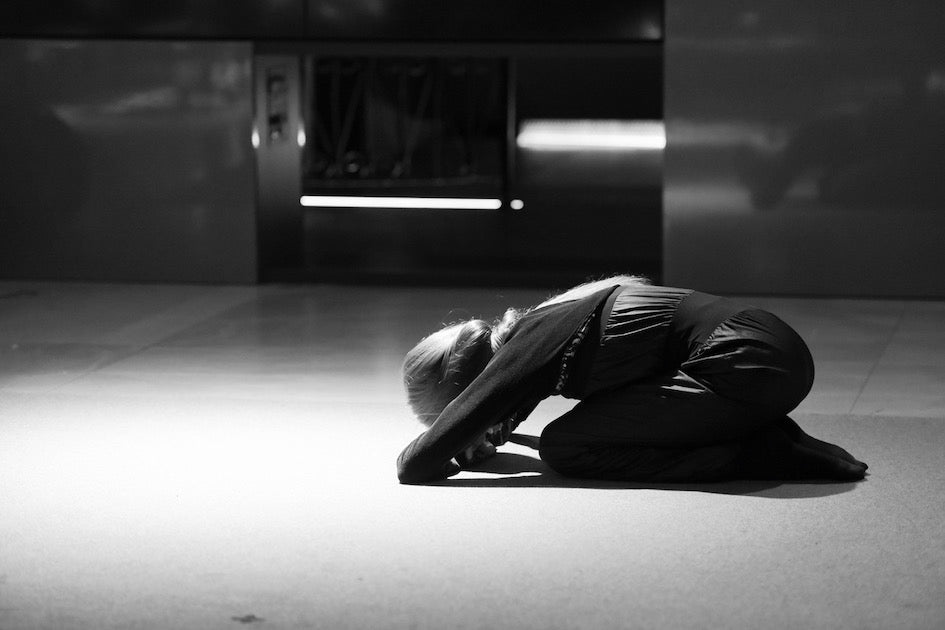
OVERTRAINING AND INJURIES
'No pain, no gain' is for Rambo-wannabee egos – Erika Lemay
Have you ever been injured?
That question!
Pull on the same joints repetitively for decades and repeat the same traumatic movements hundreds of times daily, and then ask that question again. Why don't we ask Olympians if they have ever suffered injuries?
Of course, they have!
The question should be: How do you cope with injuries and keep them minor?
Ballet dancers frequently tear their Achilles tendons, skiers their ACL, aerial performers their shoulder rotator cuff tendons. The idea is to avoid it at all costs or be able to juggle mild injuries and inflammation during a career without too much irreversible damage. Once you injure yourself seriously, you might need surgery and the rehabilitation that follows. You will have inner scar tissue adherences that might negatively impact your performance. When your injury fully recovers, if that is a possibility, you will have to start a whole training program only to re-acquire skills you previously considered basic. Recovery time to be able to sit at your desk and recovery time to be able to perform strenuous physical efforts imply completely different timelines.
FIX IT BEFORE YOU BREAK IT: PERFORMING INJURED
A big part of your training should be directed at injury prevention and strengthening, making your body as injury bulletproof as possible while pushing its boundaries. It is a science in itself and deserves the utmost attention.
It is tempting and relatively easy to keep going when the body aches. Not listening to it does not make you strong; it makes you stupid. You must learn to dissociate pain from discomfort. In strength work as in intense stretching sessions, aim for discomfort to the limits of the bearable—your body needs to be pushed to an appropriate level for gains to occur.
To become an elite performer, you may have to learn to bear thresholds of physical distress rational human beings would associate with a near-death experience. There is a paradox in this: We have to learn to push through pain to maintain and acquire strength and skills—which implies training and performing without ever being 100% pain-free—but we must never cross the line that leads to these irreversible injuries. I’m still learning to dance on the edge of the cliff safely.
For example, you can easily keep training and performing with tendinitis and bursitis for years; it's bearable and does not entirely debilitate your performance. However, not to treat tendon inflammation is not only painful, but over time, inflamed tendons become thickened, lumpy, and irregular. Without appropriate rest and time for the tissue to heal, tendons can become permanently weakened and eventually rupture.
I can’t stress enough the importance of preventive reinforcement and stabilisation. It is even more important if you are a beginner since your body isn't ready for what you want it to learn. As you age, you need to increase the ratio of time given to preventive training versus stress training. It is utterly boring but the only way to achieve the highest level.
Some skills are worth practising only when all the influencing factors are perfect; otherwise, it's counterproductive. For the movements that potentially harm your body the most, break down the actions and practice all of these to perfection, reducing the amount of repetition of the damaging movement. Once every perfected step is put together, the final result has dramatically improved. It's a smarter way to develop a given skill.
Injuries remain the most critical obstacle of your career. Don't try to fast forward recovery or ignore signs of distress when your body screams or even whispers. By thinking you can push a bit more and buy yourself time, you buy yourself an early expiration date.
OVERTRAINING
Overtraining may manifest in different ways. The most obvious is a sudden drop in performance, becoming fatigued a lot easier, or an increased sensation of effort when performing what usually only means mild training. An elevated resting heart rate is also a good indicator, thus the value of measuring your heart rate every morning when awaking. Do so in a seated position, before coffee, food, or any activity.
Ignoring overtraining symptoms may worsen into restless sleeping, chronic injuries, and extend to depression due to its impact on your hormonal system. It can also manifest itself in a metabolic imbalance. Personally speaking, the latter is a good indicator. My body will start retaining water for no reason; my weight will increase even if I train more and eat less. It's often a sign that the adrenal glands are not able to function correctly due to the extenuating stress they are sustaining. That symptom often accompanies a broad feeling of overall pain in my whole body. Acute inflammation, due to elevated cortisol, can be detected in a blood draw.
Elevated cortisol leads to loss of strength and muscle mass, poor sleep, high levels of anxiety, inability to recover from daily work, and weight increase. If you can't identify the problem, it might be the start of an infernal cycle.
I am all for pushing until we collapse: the fighter mentality of overcoming fear and discomfort daily until we rise to the top. I am allergic to wimps. But there is a part of the mental strength that translates into stopping when it's time to stop. In that case, being the coward is staying on the wrong path and enduring despite the distress signals that sends your body. Get to know the early signs of overtraining and react before you lose months or years of training abilities.
A strategy to avoid overtraining also sits in increasing your body's resilience to efforts. Knowing your limits and stretching them just enough to improve, but not blindly, thus avoiding sabotaging your improvements.
You will over-train earlier by disregarding proper rest post-physical stress. Stressing your body to high levels through exercise requires an increased quality and quantity of care, including plenty of good sleep. Recovery is part of the practice.
Amongst others, here are a few signs you may be overtraining. Beware that you have to compare these signs to your standard indicators to identify a real abnormality. By monitoring correctly, you'll catch the anomaly sooner.
- Elevated resting heart rate
- Extreme fatigue
- Chronic pain and inflammation
- Loss of appetite
- Gaining weight for no specific reason
- Insomnia and restless sleep
- Increased perceived effort
- Loss of strength and muscle mass
- Mood swings, lack of motivation
What to do when it happens:
- Rest completely
- Hydrate profusely
- Be meticulous with your eating
- Avoid sugar, alcohol, coffee, and everything that strains your adrenal glands
- Resume training with mild physical activity only
At the end of the day, maybe the Rambo-wannabees and wimps have more in common than what we previously thought.















Leave a comment
This site is protected by hCaptcha and the hCaptcha Privacy Policy and Terms of Service apply.